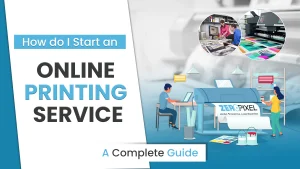That sounds so simple, but actually, turning your 3D printing hobby into a business is pretty darn hard. Here at ZEROPIXEL, we’ve supported all sorts of print farms-from those selling in their first Etsy store to some of the largest ones with hundreds of 3D printers. In this guide, we will show you the five stages of running a print business at home. This guide is based on my personal professional entrepreneurial printing agency ZEROPIXEL that I still run with expanding networks.
Table of Contents
Toggle1. Learn the Startup Model
Does your 3D printing business bring in money at all? Some print farms actually run at a loss despite their best attempts to be a profitable businesses. Usually, there are a few reasons for that: perhaps they do not have an overall business model. You need to abide by a specific business model that best fits you to start your printing business from home. Entrepreneurs place very low prices on their products just to get traction, or maybe they are jumping from one idea to another. So, you should follow the startup model that gives you good ROI and selling business outcomes based on what is going to work.
Think of Printing Unusual Things
You can look for product ideas that solve a problem within a specific niche of printing ideally something that you’re personally interested in.
2. The Hobby Model
Where would it make sense to turn your printing hobby into a business? Well, a hobbyist print farm is generally a 3D printing operation that’s more interested in starting a small printing business than a large business. A hobbyist at this stage also tends to utilize his or her skills and experience to make just enough money to fund his or her next 3D printer. Amateurs charge appropriately for their goods and services, yet for the most part, only seem to make just enough to pay back the cost of equipment and materials.
You will have to be in a position to avoid common pitfalls that are faced by most amateur enthusiasts, planning to turn your hobby into printing services. At the same time, they over-invest too much time in fiddling with their printers and start to prematurely optimize these prints for things. It can be print speed or part design, most of the hobbyists also always end up fiddling too much by hacking around something before any market research can be done.
Does Hobby-Turn Business Worth?
There are situations where a hobbyist print farm makes sense. If you’re just looking for a means to fund your 3D printing addiction, then the hobbyist print farm can be a fun and enriching way to do it. The key here is that it is a clear goal: running the online print service by business owners versus actually wanting to grow the business. Being able to answer that question can help guide some of the decisions as to what operation you want to run.
3. The Buy-A-Job Printing Business
Do you have a profitable 3D printing business, or are you just buying yourself a job? A buy-a-job 3D printing business is profitable, but only just. Despite investing thousands of dollars in equipment and materials, the amount of money you’re bringing home at the end of the day is about equivalent to a nine-to-five job. And that’s not too bad—you’re working for yourself, so at least that means your boss is pretty cool!
If you’re at this stage of running a printing business, it means you’re on the right track to building a good business. But there are still some big inefficiencies holding you back. A lot of print farms come to us at this stage because they’re frustrated that they aren’t able to grow easily, and they’re looking for a better way.
DIY Often Leads to Entrepreneurship
The very DIY mindset that has gotten you this far is now going to start holding you back, so you need to think about ways that you can eliminate, automate, and delegate tasks within your business. An example of elimination is offering fewer product variants to reduce complexity. For automation, you could reduce the number of interruptions in your day by setting some 3D printers up with auto-ejection. For delegation, you could consider using ready-made business tools instead of building your own from scratch.
4. The Lifestyle Printing Business
Does your printing business support your ideal lifestyle? A lifestyle business has reached a profitable level to support your ideal lifestyle-but no more than that. Key indicators of a potential lifestyle business: good profit margins, well-known within a profitable niche, high-value recurring customers, and probably sell to other businesses
5. The Scalable 3D Printing Business
3D printers can literally print money, but getting there isn’t easy. A scalable business is the pinnacle of success in the world of 3D print farming. It represents the ultimate goal of profitability, growth, and sustainability. It’s scalable because you now have established systems, and the path to growth is clear.
What I learned here at ZEROPIXEL is that your print farm is optimized, efficient, and automated. You focus on preventing issues rather than responding to them, and every day you try to make your print farm just one percent better. At this point, all you can do is continue to scale, innovate, and optimize. As a leader in the additive manufacturing movement, you now have a unique opportunity to help the community.
Conclusion
We covered the five different stages of running a printing business from home or scratch. Startup print farms lose money over time, so they need to find a product or service that actually makes money. Hobbyist print farms tend to be more interested in 3D printing than running a business. Lifestyle 3D printing businesses are sustainable and have the potential for growth if you’re willing to scale up. Finally, scalable home-based printing businesses are highly profitable, and efficient, and make a positive impact on society by giving back to the community.


